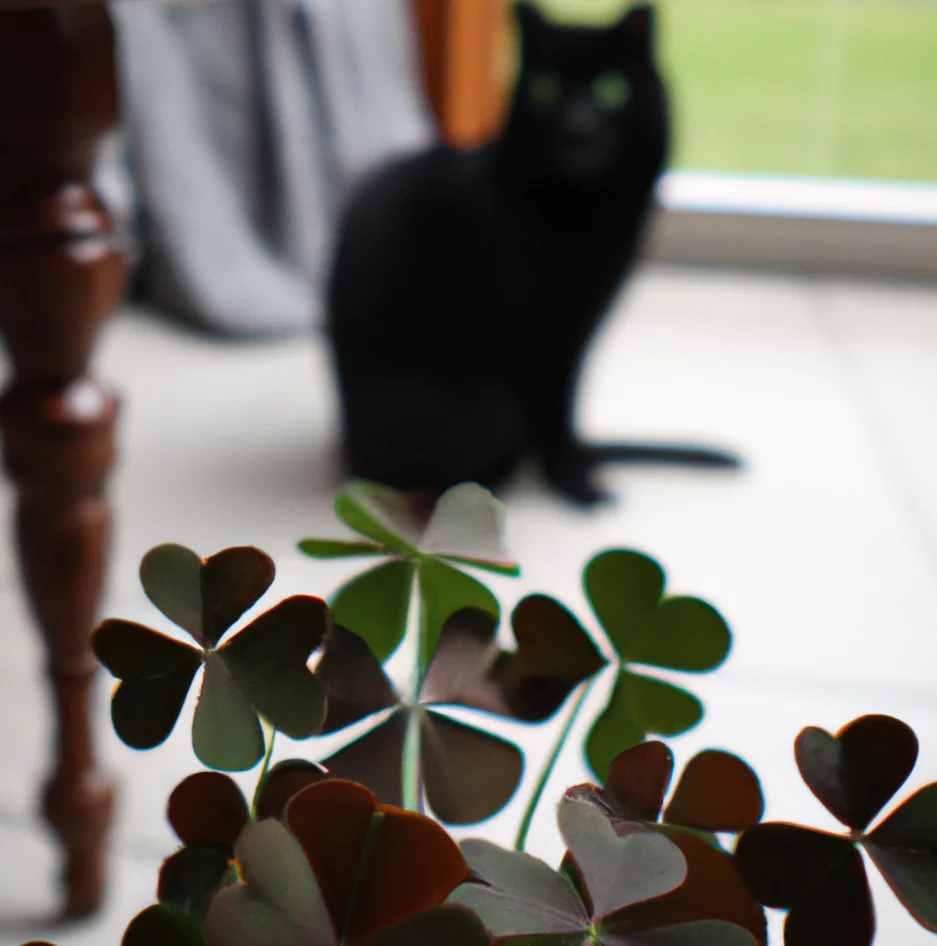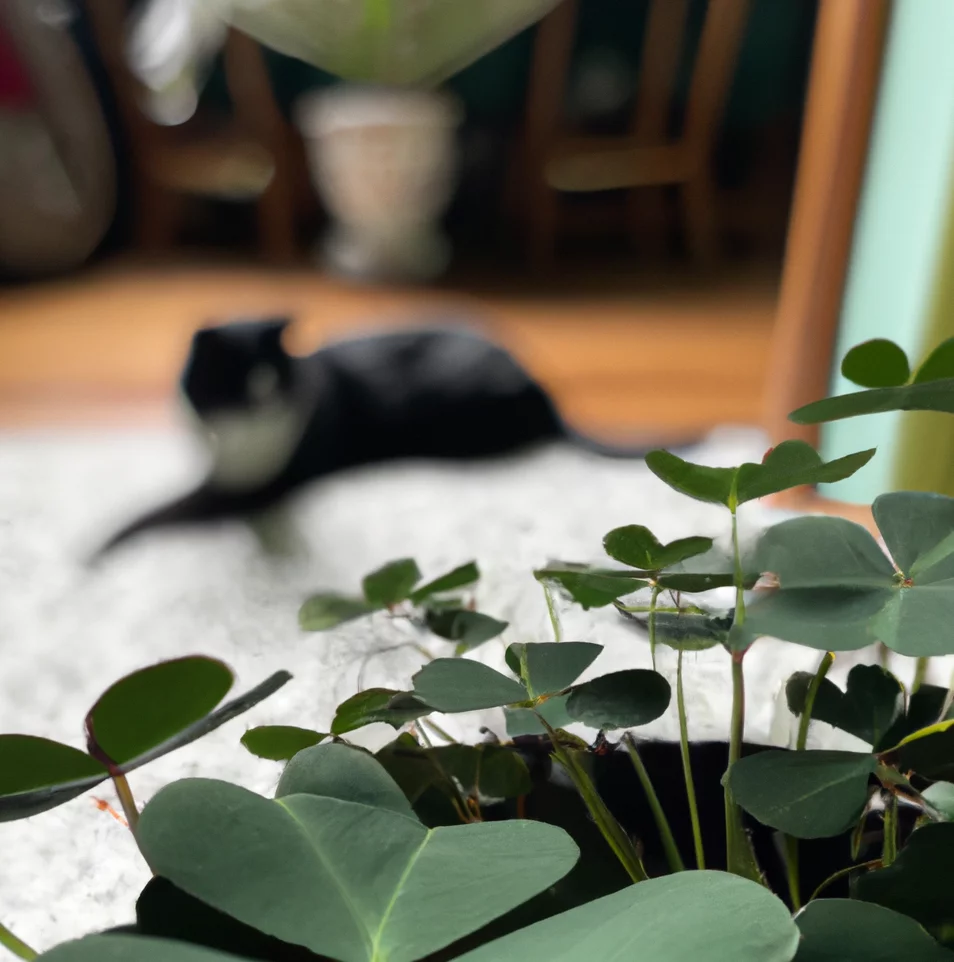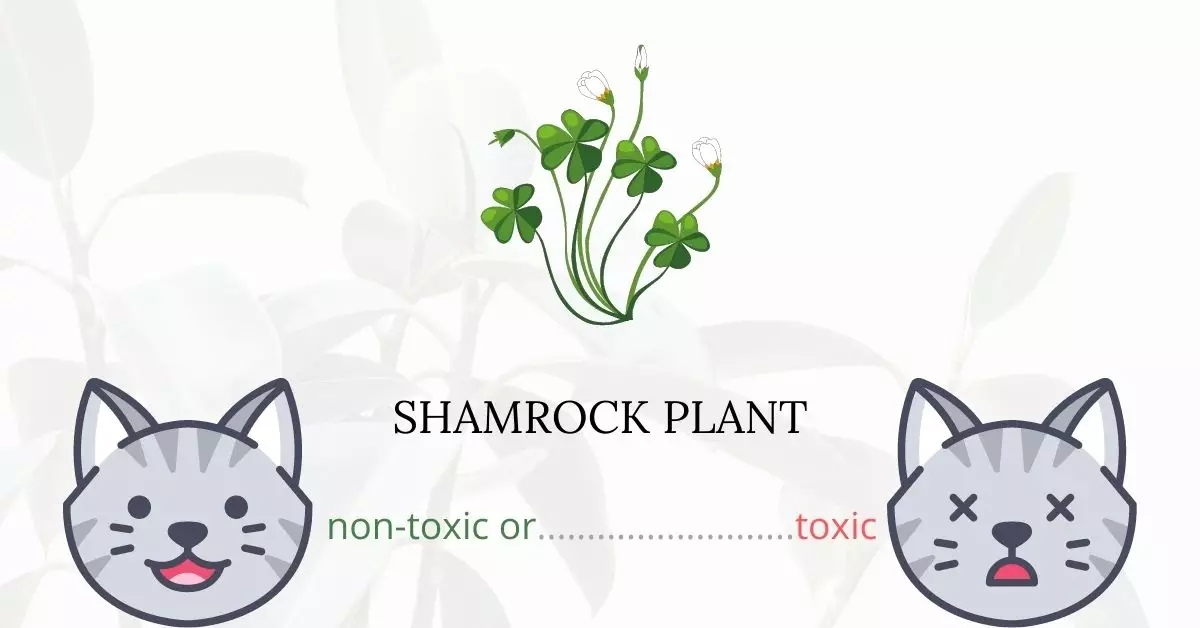The shamrock plant, owing to the presence of a poisonous principle known as oxalic acid, is indeed toxic to cats. When consumed, these toxins are swiftly absorbed in the gastrointestinal tract where they bind to systemic calcium, leading to a significant drop in blood calcium levels (acute hypocalcemia) and causing calcium oxalate (CaOx) accumulation in the renal tubules, which can result in acute renal (kidney) failure. In essence, cats ingesting the shamrock plant are at risk of experiencing serious health conditions due to its toxicity.
To ensure the reliability and precision of this information, this article is crafted in collaboration with a panel of seasoned Doctors of Veterinary Medicine (DVMs). Their expertise has enriched our understanding, allowing us to provide accurate and the most current insights on the potential risks posed by various plants, including the Shamrock Plant, and their impact on cats. Additionally, we have referred to high-authority and reputable sources like ASPCA and PetMD to reaffirm the validity of every piece of information shared in this article on plant toxicity.
This article aims to be a credible guide for pet owners seeking knowledge and advice on maintaining the well-being of their feline companions by avoiding harmful plants. By acknowledging the severity of the risks involved with exposure to plants containing soluble oxalic acid, such as shamrocks, due to their inclination to induce hypocalcemia and severe renal damage, pet owners can make informed decisions to keep their pets safe. The amount of plant consumed and the duration of exposure can influence the degree of toxicity, so it is crucial to monitor pets and prevent their access to such harmful plants.
Clinical Signs of Shamrock Plant Poisoning in Cats

When cats ingest the Shamrock Plant, they may exhibit various clinical signs, owing to the toxicity induced by oxalic acid found in the plant. The level of toxicity and subsequent symptoms are contingent upon the quantity consumed and the individual cat’s overall health status, with dehydrated cats or those with preexisting renal conditions being particularly susceptible. Below is a detailed account of each clinical sign along with explanations:
- Weakness and Lethargy: Cats may experience a lack of strength and energy due to the interference of oxalic acid with calcium metabolism, leading to muscle weakness and an overall lethargic state.
- Hypersalivation: The presence of needle-shaped calcium oxalate crystals, or raphides, can cause severe oral irritation and discomfort, leading to increased salivation.
- Loss of Appetite: The discomfort and pain induced by the plant’s toxins often result in a decreased desire to eat.
- Vomiting and Diarrhea: These are common responses to the ingestion of toxic substances, as the body attempts to expel the harmful agents, which in this case, is the soluble oxalic acid from the shamrock plant.
- Tremors: Secondary to acute hypocalcemia, muscle tremors can occur due to lowered levels of calcium in the blood, as oxalic acid binds with calcium.
- Kidney Damage: Occurring 24-36 hours post-ingestion, kidney damage is a serious repercussion of consuming the Shamrock Plant. The accumulation of calcium oxalate in the renal tubules can lead to acute renal failure.
Each clinical sign can vary in severity and is strongly influenced by the cat’s overall condition and the amount of Shamrock Plant ingested. Immediate veterinary attention is imperative if a cat is suspected to have come into contact with or consumed the Shamrock Plant, to prevent the progression of symptoms and to administer appropriate treatment promptly.
First Aid and Treatment of Shamrock Plant Poisoning in Cats

Some of the veterinarian’s treatment options for mild instances of shamrock poisoning include causing vomiting, starting intravenous fluid therapy, using activated charcoal to eliminate toxins in the cat’s stomach, and administering drugs to minimize repeated vomiting. Depending on the cat’s symptoms, further drugs and treatments may be offered.
Recovery from Shamrock Plant Poisoning in Cats

The probability of a cat’s recovery is determined by how fast the poisoning was detected and treated upon ingestion, as well as whether or not renal failure ensued. Mild instances of shamrock poisoning that are treated promptly and properly generally resolve themselves within 24 hours. In the event of renal impairment, the veterinarian may demand regular clinic visits to check on the cat.
Prevention of Shamrock Plant Poisoning in Cats
Make sure that you do not grow shamrock plant in your home. Keep your house cat-friendly. Letting your cat stay indoors is the best way to prevent exposure to shamrock plants and other toxic plants.
If you love plants but have cats at home, check out these lists:





